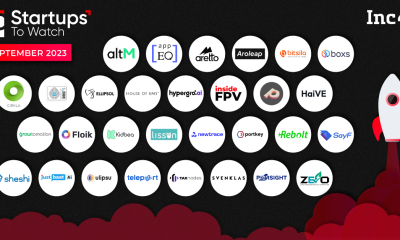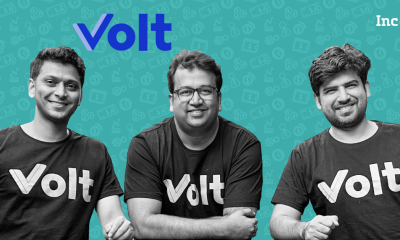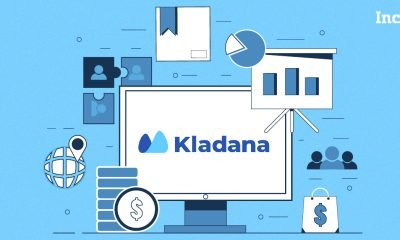Crptocurrency
Centralization Concerns Arise as Two Block Builders Control 88.7% of Ethereum Blocks

In a development that has sparked widespread concern within the Ethereum community, two block builders, Beaverbuild and Titan Builder, produced 88.7% of Ethereum mainnet blocks during the first two weeks of October 2024, according to a report by Cointelegraph. This overwhelming concentration of block production has raised red flags about potential centralization risks in Ethereum’s decentralized network.
While Toni Wahrstätter of the Ethereum Foundation attributes this trend to private order flow (XOF), which limits competition among builders, some argue that the proposer-builder separation (PBS) mechanism implemented by Ethereum helps mitigate these risks. However, critics warn that despite PBS, powerful validators and the influence of Miner Extractable Value (MEV) incentives could still pose significant threats to the network’s decentralization.
Understanding the Role of Block Builders in Ethereum
What Are Block Builders?
Block builders are entities responsible for constructing blocks on the Ethereum network by selecting and ordering transactions. After constructing a block, the builder proposes it to a block proposer (validator), who then appends it to the blockchain. This division between block construction and validation is part of Ethereum’s proposer-builder separation (PBS) model, introduced to increase decentralization and security by separating the roles of validators and builders.
Proposer-Builder Separation (PBS)
PBS was implemented to prevent validators from monopolizing transaction selection and block construction, which could lead to centralization risks. By allowing specialized block builders to focus on constructing efficient blocks while validators propose them, PBS encourages competition and reduces the likelihood of any single entity controlling the network.
The Centralization Concern: Two Builders Control 88.7% of Blocks
Beaverbuild and Titan Builder Dominate Block Production
During the first half of October 2024, Beaverbuild and Titan Builder collectively controlled 88.7% of Ethereum’s block production, raising alarms about potential centralization in the network. While Ethereum was designed to promote a decentralized ecosystem, the disproportionate control exerted by these two entities threatens to undermine the very principles on which the network was built.
Private Order Flow (XOF) and Its Impact
Toni Wahrstätter from the Ethereum Foundation suggests that this concentration is largely driven by the use of private order flow (XOF), a mechanism that allows certain builders to gain access to privileged transaction data before it becomes publicly available. This gives them a competitive edge over other builders, as they can prioritize and include the most lucrative transactions in their blocks, further cementing their dominance.
Private order flow creates an uneven playing field by restricting access to transaction flow, limiting competition among block builders and enabling a small number of builders to control a significant portion of block production. This has sparked debates about the fairness and transparency of the Ethereum block-building process.
Differing Perspectives on the Centralization Risks
Ryan Lee: Proposer-Builder Separation Mitigates Risks
Ryan Lee, a researcher at Bitget Research, argues that despite the dominance of Beaverbuild and Titan Builder, Ethereum’s proposer-builder separation mechanism helps to mitigate centralization risks. He points out that since proposers (validators) and builders operate independently, block builders cannot prioritize transactions based on personal preferences. This separation, according to Lee, ensures that validators still have a role in maintaining decentralization, even if a few builders dominate block construction.
Concerns Over MEV Exploitation
On the other hand, some critics warn that the centralization of block building could still have a profound impact on the network, especially when combined with Miner Extractable Value (MEV) incentives. MEV refers to the profits that miners or validators can extract by reordering, including, or excluding transactions in a block. Powerful validators and builders can exploit these incentives to their advantage, potentially distorting transaction processing and impacting the fairness of the network.
By controlling a large portion of blocks, dominant builders like Beaverbuild and Titan Builder could exert undue influence over which transactions are processed and how MEV is distributed, further concentrating power within the network and undermining Ethereum’s decentralization goals.
Implications for Ethereum and Decentralization
Potential Risks to Ethereum’s Security and Fairness
The dominance of two block builders in Ethereum’s block production poses several risks to the network’s security and fairness:
- Reduced Competition: When a few entities control the majority of block production, it limits competition and reduces the overall efficiency of the network. This lack of diversity in block builders could lead to slower innovation and higher transaction fees.
- Increased Vulnerability to Exploits: Centralization increases the risk of coordinated attacks or exploits. If a small number of builders collude or are compromised, they could potentially manipulate transaction ordering or censor transactions, undermining the security of the network.
- MEV Centralization: With dominant builders controlling the majority of blocks, they also capture a disproportionate share of MEV. This could lead to a concentration of profits among a few entities, further exacerbating centralization concerns and potentially harming the network’s economic fairness.
The Role of Validators in Decentralization
Validators still play a crucial role in Ethereum’s decentralization, even with PBS in place. While block builders are responsible for constructing blocks, validators ultimately decide which blocks are added to the blockchain. By maintaining a diverse and distributed network of validators, Ethereum can offset some of the centralization risks posed by dominant block builders.
However, if validators begin to align with dominant builders in search of higher MEV rewards, this could further concentrate power and undermine the decentralization of the network.
Possible Solutions and Next Steps
Increasing Transparency in Order Flow
One potential solution to the centralization issue is to increase transparency around private order flow (XOF). By making transaction flows more accessible to all builders, Ethereum could level the playing field and promote fair competition among block builders. This would reduce the ability of a few builders to monopolize block production and improve decentralization.
Promoting Diversity Among Block Builders
Encouraging more entities to participate as block builders is another potential solution to the centralization problem. This could be achieved by reducing barriers to entry, providing incentives for smaller builders, or implementing policies that limit the dominance of any single builder. By promoting diversity among builders, Ethereum can enhance decentralization and improve network security.
Reassessing MEV Distribution
To address the concentration of MEV among dominant block builders, Ethereum could explore alternative methods of distributing MEV more equitably across validators and builders. This would reduce the incentive for validators to align with powerful builders and help maintain decentralization in the network.
Conclusion
The recent dominance of Beaverbuild and Titan Builder, controlling 88.7% of Ethereum’s block production, raises significant concerns about centralization in one of the world’s most widely used blockchain networks. While the proposer-builder separation (PBS) mechanism provides some safeguards, the concentration of block-building power—exacerbated by private order flow (XOF) and MEV incentives—poses risks to Ethereum’s decentralization, security, and fairness.
As the Ethereum community continues to grapple with these challenges, it will be critical to explore solutions that promote competition, transparency, and diversity within the network. Maintaining Ethereum’s decentralized ethos is essential to ensuring its long-term success and resilience in the face of evolving market dynamics.
To learn more about the challenges facing decentralized networks and how blockchain technology is evolving, explore our latest news article, where we discuss the key trends shaping the future of Web3 and decentralized finance.
Disclaimer: The information provided is not trading advice, Bitcoinworld.co.in holds no liability for any investments made based on the information provided on this page. We strongly recommend independent research and/or consultation with a qualified professional before making any investment decisions.
Crptocurrency
Voce Sabia to Launch $VS Token, Expanding the Celebrity-Backed Meme Token Trend in Brazil

Dubai, United Arab Emirates, October 17th, 2024, Chainwire
Voce Sabia, the fourth-largest content creator in Brazil with over 45 million subscribers on YouTube and a combined social media following of 86 million, is set to launch its own meme-inspired cryptocurrency token, the $VS token. With this launch, Voce Sabia joins a growing list of celebrities leveraging their platforms to introduce digital tokens, including rapper Iggy Azalea, whose token, $MOTHER, reached a peak market capitalization of $136 million.
Since the May release of Iggy Azalea’s $MOTHER token, which provided early adopters with substantial returns, celebrity-driven tokens have gained traction within the Web3 space. The success of these tokens can be attributed to the large and highly engaged communities that creators bring to the table. Capitalizing on the trend, Voce Sabia aims to use its substantial fanbase to drive the $VS token, leveraging a community that is nearly double in size compared to Azalea’s combined following.
The $VS token will launch through a fair release on the Solana blockchain. It boasts an initial market cap of just $25,510, setting the stage for accessible entry points for fans and potential investors. This launch will be powered by the XCAD Network, a platform dedicated to helping content creators issue tokens while building ecosystems around their unique brands. The XCAD Network has successfully supported various creator token launches, enabling the $VS token to offer unique fan engagement opportunities.
 Comparison Graphic released by Voce Sabia’s Social Media Team.
Comparison Graphic released by Voce Sabia’s Social Media Team.
The $VS token will give Voce Sabia’s community access to exclusive content, including merchandise, one-on-one calls, and other interactive opportunities, fostering deeper connections between the creator and their followers. Moreover, $VS holders will have governance rights, enabling them to participate in selected decisions regarding the channel’s future direction.
The entry of Voce Sabia into the meme token arena is emblematic of a larger movement among public figures integrating Web3 technologies to engage their fans on new levels. The trend highlights the appeal of combining meme culture with strong social media followings, driving user engagement and fostering active communities.
For more information and to stay updated on the $VS token launch, Voce Sabia has provided links to its official communication channels:
Twitter: https://x.com/Vocesabiatoken
Telegram: https://t.me/vocesabiatoken
WhatsApp: https://www.whatsapp.com/channel/0029Vaq3U7hJENxzmKNrnV00
Contact
Jeff Sa
Memespotlightorg@outlook.com
Disclaimer: The information provided is not trading advice, Bitcoinworld.co.in holds no liability for any investments made based on the information provided on this page. We strongly recommend independent research and/or consultation with a qualified professional before making any investment decisions.
Crptocurrency
Aleph Zero Launches Subsecond Shielding on Testnet, Delivering Client-Side ZK Privacy for DeFi

Zug, Switzerland, October 17th, 2024, Chainwire
Most zero-knowledge proofs are generated server-side for scaling, but Aleph Zero’s zkOS does that directly on users’ devices, offering privacy in a fraction of second
Aleph Zero, the leading blockchain platform recognized for its focus on privacy and scalability, announces the launch of the first feature of zkOS (zero-knowledge operating system)—Shielding, on its EVM Testnet. This release marks the first opportunity for users to experience the shielding feature of zkOS in action, demonstrating the speed and privacy capabilities of Aleph Zero’s zero-knowledge proof (ZK) technology optimizations.
Privacy at Lightning Speed
The Shielding Demo release is a significant milestone for Aleph Zero, representing its commitment to developing practical privacy solutions for the blockchain industry. Aleph Zero’s zkOS enables zero-knowledge proofs to be generated client-side—meaning data is encrypted locally on the user’s device and never leaves unencrypted—providing high levels of privacy without compromising transaction speed. The Shielding Demo serves as the first practical interface for users to experience this privacy functionality, with zero-knowledge proofs generated within 0.5-3 seconds, ensuring that privacy has minimal impact on transaction performance.
“Privacy has long been a challenge in blockchain, often due to poor user experience,” said Adam Gagol, Co-Founder & CTO of Aleph Zero. “With today’s release, we’re delivering one of the fastest client-side ZK directly to users, combining privacy and performance. The release of the Shielding Demo offers a glimpse into how zkOS can bring privacy to DeFi without sacrificing speed or usability.”
How the Shielding Demo Works
The Shielding Demo provides an intuitive interface for users to test Aleph Zero’s zkOS privacy layer. Here’s how it works:
- Data Privacy: zkOS generates zero-knowledge proofs locally on the user’s device, ensuring that data remains private and secure.
- Transaction Flow: Users generate ZK proofs, send transactions to a relayer, and then they are executed on-chain—all while maintaining privacy.
- Fast Proving Times: The system delivers ZK proofs in 0.5-3 seconds on most devices, demonstrating zkOS’s speed and its minimal impact on transaction times.
The Testnet version of zkOS allows users to interact with the system and witness its capabilities, though Aleph Zero notes that the privacy features will be built directly into the upcoming Common app.
Why zkOS Matters: A Glimpse Into the Future
The launch of the Shielding Demo on Testnet is only the beginning. Aleph Zero’s roadmap for zkOS extends far beyond this initial release, with ongoing work on simplifying the user experience and the introduction of additional privacy features, such as ZK-ID and anonymity revokers, to ensure both privacy and protection against fraudulent use of the platform.
The system is designed to be easily integrated by developers, providing a privacy framework that requires minimal cryptographic knowledge. This simplicity, combined with Aleph Zero’s rapid client-side ZK proof generation, makes zkOS a critical tool for developers building privacy-centric applications across DeFi and other web3 sectors.
Unlocking Privacy for New Use Case
The privacy space in blockchain has been facing increased challenges, such as regulatory scrutiny and delistings, often due to concerns over non-compliance. Aleph Zero’s zkOS offers a fresh approach by delivering privacy solutions that balance user confidentiality with regulatory requirements. Instead of focusing solely on anonymity, zkOS is designed to meet both the needs of users and the evolving demands of compliance.
zkOS enables users to manage their assets securely across multiple blockchains, ensuring their transactions remain private. Unlike traditional privacy methods that rely on centralized or hardware-based systems, zkOS operates directly on the client-side, safeguarding privacy without external dependencies.
Next Steps for Aleph Zero
As the Testnet release progresses, Aleph Zero is focusing on refining Shielding and zkOS for its Mainnet deployment. Users who engage with the Shielding Demo will have the opportunity to be whitelisted for upcoming zkOS Beta testing on Aleph Zero’s EVM Mainnet.
About Aleph Zero
Aleph Zero is an ecosystem of blockchain solutions that are engineered for speed, data confidentiality, and ease of development. It achieves efficiencies akin to conventional web2 systems, upholds rigorous standards for data protection via zero-knowledge proofs (ZKP), and offers a comprehensive toolset for development across web3, ranging from WASM-based Rust to EVM-based Solidity environments. Aleph Zero’s versatility is highlighted by over 40 use cases being actively developed, showcasing its adaptability across various sectors and applications. These use cases are part of an engaged community and growing ecosystem of web3 applications supported by Aleph Zero programs.
For more information, visit https://alephzero.org/.
For any inquiries about this release, please contact josh@serotonin.co or ana@serotonin.co.
Contact
PR Manager
Josh Adams
Aleph Zero
josh@serotonin.co
Disclaimer: The information provided is not trading advice, Bitcoinworld.co.in holds no liability for any investments made based on the information provided on this page. We strongly recommend independent research and/or consultation with a qualified professional before making any investment decisions.
Crptocurrency
DeBridge Launches DBR Governance Token with Airdrop to Nearly 500,000 Users

In a major development for the cross-chain ecosystem, DeBridge, a prominent cross-chain infrastructure provider, has launched its governance token, DBR, with a significant airdrop to nearly 500,000 early users and community members. According to CoinDesk, the token was built on Solana and has an initial circulation of 1.8 billion tokens out of a total 10 billion maximum supply. The launch marks a pivotal moment for DeBridge as it seeks to decentralize governance and empower its community. Trading for DBR started at $0.03 per token, with the token targeting a fully diluted valuation of $300 million.
Understanding the DBR Governance Token
What is DBR?
DBR is the governance token for the DeBridge ecosystem, designed to allow token holders to participate in governance decisions, such as protocol upgrades, network parameters, and the direction of the platform. By introducing DBR, DeBridge aims to decentralize control over its cross-chain infrastructure and create a more community-driven decision-making process.
Tokenomics of DBR
- Maximum Supply: 10 billion DBR
- Initial Circulation: 1.8 billion DBR (18% of the total supply)
- Airdrop Distribution: Nearly 500,000 early users and community members were selected to receive DBR tokens through an airdrop.
- Initial Price: $0.03 per token
- Fully Diluted Valuation (FDV): $300 million
The distribution of DBR through an airdrop incentivizes early participants and supporters of the DeBridge ecosystem, rewarding them for their contributions and engagement. The airdrop is being conducted in two phases, and recipients must adhere to specific conditions to claim their tokens, including penalties for early full withdrawals.
Phased Airdrop and Withdrawal Penalties
Two-Phase Airdrop Distribution
DeBridge’s airdrop distribution is structured in two phases to ensure that tokens are distributed fairly and to incentivize long-term participation:
- Phase 1: Eligible users can claim a portion of their DBR tokens initially, but only a percentage of the total allocation will be available for immediate withdrawal.
- Phase 2: In the second phase, users can claim the remaining portion of their airdropped DBR tokens. However, penalties apply to users who attempt to withdraw all their tokens early, discouraging short-term speculation and encouraging long-term holding.
The penalty mechanism is designed to promote the stability of the DBR token and prevent rapid selling that could destabilize the token’s market value.
Encouraging Long-Term Engagement
By implementing a phased airdrop with penalties for early withdrawals, DeBridge aims to foster long-term community engagement. This approach encourages token holders to remain active participants in the DeBridge ecosystem and contribute to the governance and growth of the platform over time.
The Role of DBR in DeBridge Governance
Decentralizing Governance
The introduction of the DBR token is a significant step toward decentralizing governance within the DeBridge ecosystem. Token holders will have the power to vote on key governance proposals, including:
- Protocol Upgrades: Proposals to enhance DeBridge’s cross-chain capabilities and infrastructure.
- Network Parameters: Adjustments to transaction fees, security mechanisms, and other core network settings.
- Community Initiatives: Voting on grants, partnerships, and other initiatives that promote the growth of the DeBridge ecosystem.
By giving the community a direct say in the governance process, DeBridge aims to create a more inclusive and decentralized decision-making framework.
Incentivizing Participation
DBR token holders will be incentivized to participate in governance through staking and voting rewards. By actively engaging in the governance process, users can earn additional DBR tokens and contribute to the long-term success of the DeBridge platform. This creates a positive feedback loop where active governance participation leads to increased rewards and influence within the ecosystem.
Trading and Market Impact
Initial Trading and Market Performance
DBR began trading at $0.03 per token, with an initial fully diluted valuation of $300 million. Early trading volumes have been strong, reflecting significant interest in the token from both airdrop recipients and the broader cryptocurrency community.
Potential for Price Volatility
As with many newly launched tokens, DBR is expected to experience price volatility in its early trading days. The phased airdrop and withdrawal penalties are designed to mitigate some of this volatility by discouraging short-term speculation and promoting long-term holding.
Long-Term Growth Prospects
The long-term growth prospects for DBR are closely tied to the success of the DeBridge platform and its cross-chain capabilities. As DeBridge continues to expand its services and partnerships, the utility and demand for DBR are likely to increase. Additionally, as more users participate in governance and staking, the circulating supply of DBR could become more distributed, further stabilizing the token’s price.
The Importance of Cross-Chain Infrastructure
DeBridge’s Role in the Cross-Chain Ecosystem
DeBridge is a cross-chain infrastructure provider that enables seamless interoperability between different blockchain networks. As the cryptocurrency ecosystem becomes more fragmented across multiple chains, cross-chain solutions like DeBridge are essential for ensuring that assets and data can move freely and securely between networks.
By launching a governance token, DeBridge is decentralizing control over its infrastructure and empowering the community to shape the future of cross-chain interoperability. This move aligns with the broader trend in the crypto space toward decentralization and community-driven governance.
Enhancing Cross-Chain Collaboration
The DBR token will play a crucial role in enhancing cross-chain collaboration by incentivizing community members to participate in governance decisions that improve interoperability between blockchain networks. As more projects and users adopt DeBridge’s services, the importance of cross-chain governance will continue to grow, making DBR a key player in the evolution of decentralized finance (DeFi).
Conclusion
The launch of the DBR governance token by DeBridge marks a significant milestone in the platform’s journey toward decentralization and community-driven governance. With an airdrop to nearly 500,000 early users, the DBR token aims to empower the community to take an active role in shaping the future of cross-chain infrastructure. By introducing phased distribution and withdrawal penalties, DeBridge is encouraging long-term engagement and discouraging short-term speculation, ensuring the stability of the DBR token.
As DeBridge continues to expand its cross-chain services and partnerships, the demand for DBR is expected to grow, making it an integral part of the platform’s governance and ecosystem. With its initial trading price of $0.03 per token and a fully diluted valuation of $300 million, DBR has already captured the attention of the crypto market, and its future looks promising as cross-chain solutions become increasingly essential in the decentralized finance landscape.
To learn more about the latest developments in cross-chain infrastructure and governance tokens, explore our latest news article, where we discuss the key trends shaping the future of decentralized finance.
Disclaimer: The information provided is not trading advice, Bitcoinworld.co.in holds no liability for any investments made based on the information provided on this page. We strongly recommend independent research and/or consultation with a qualified professional before making any investment decisions.
-

 Startup Stories1 year ago
Startup Stories1 year agoWhy Millennials, GenZs Are Riding The Investment Tech Wave In India
-

 Startup Stories1 year ago
Startup Stories1 year agoStartups That Caught Our Eyes In September 2023
-

 Startup Stories1 year ago
Startup Stories1 year agoHow Raaho Is Using Tech To Transform India’s Fragmented Commercial Trucking
-

 Startup Stories11 months ago
Startup Stories11 months agoMeet The 10 Indian Startup Gems In The Indian Jewellery Industry’s Crown
-

 Crptocurrency8 months ago
Crptocurrency8 months agoLither is Making Crypto Safe, Fun, and Profitable for Everyone!
-

 Startup Stories1 year ago
Startup Stories1 year agoHow Volt Money Is Unlocking The Value Of Mutual Funds With Secured Lending
-

 E-commerce1 year ago
E-commerce1 year agoTop Online Couponing Trends To Watch Out For In 2016
-

 Startup Stories1 year ago
Startup Stories1 year agoWhy Moscow-Based Kladana Considers Indian SME Sector As The Next Big Market For Cloud Computing




